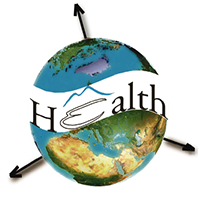A geospatial model to determine the spatial cost-efficiency of anticoagulation drug therapy: Patients' perspective

Published: 6 November 2019
Abstract Views: 1817
PDF: 729
HTML: 23
HTML: 23
Publisher's note
All claims expressed in this article are solely those of the authors and do not necessarily represent those of their affiliated organizations, or those of the publisher, the editors and the reviewers. Any product that may be evaluated in this article or claim that may be made by its manufacturer is not guaranteed or endorsed by the publisher.
All claims expressed in this article are solely those of the authors and do not necessarily represent those of their affiliated organizations, or those of the publisher, the editors and the reviewers. Any product that may be evaluated in this article or claim that may be made by its manufacturer is not guaranteed or endorsed by the publisher.
Similar Articles
- Mai Liu, Yin Zhang, Impact of climate change on dengue fever: a bibliometric analysis , Geospatial Health: Vol. 20 No. 1 (2025)
- Sarah Isnan, Ahmad Fikri bin Abdullah, Abdul Rashid Shariff, Iskandar Ishak, Sharifah Norkhadijah Syed Ismail, Maheshwara Rao Appanan, Moran’s I and Geary’s C: investigation of the effects of spatial weight matrices for assessing the distribution of infectious diseases , Geospatial Health: Vol. 20 No. 1 (2025)
- Jia-Cheng Zhang, Wen-Dong Liu, Qi Liang, Jian-Li Hu, Jessie Norris, Ying Wu, Chang-Jun Bao, Fen-Yang Tang, Peng Huang, Yang Zhao, Rong-Bin Yu, Ming-Hao Zhou, Hong-Bing Shen, Feng Chen, Zhi-Hang Peng, Spatial distribution and risk factors of influenza in Jiangsu province, China, based on geographical information system , Geospatial Health: Vol. 8 No. 2 (2014)
- Naoko Nihei, Osamu Komagata, Kan-ichiro Mochizuki, Mutsuo Kobayashi, Geospatial analysis of invasion of the Asian tiger mosquito Aedes albopictus: competition with Aedes japonicus japonicus in its northern limit area in Japan , Geospatial Health: Vol. 8 No. 2 (2014)
- Hassan M. Khormi, Lalit Kumar, Climate change and the potential global distribution of Aedes aegypti: spatial modelling using geographical information system and CLIMEX , Geospatial Health: Vol. 8 No. 2 (2014)
- Cristina Ballart, Irene Guerrero, Xavier Castells, Sergio Baròn, Soledad Castillejo, M. Magdalena Alcover, Montserrat Portús, Montserrat Gállego, Importance of individual analysis of environmental and climatic factors affecting the density of Leishmania vectors living in the same geographical area: the example of Phlebotomus ariasi and P. perniciosus in northeast Spain , Geospatial Health: Vol. 8 No. 2 (2014)
- Ahmed Seid, Endalamaw Gadisa, Teshome Tsegaw, Adugna Abera, Aklilu Teshome, Abate Mulugeta, Merce Herrero, Daniel Argaw, Alvar Jorge, Asnakew Kebede, Abraham Aseffa, Risk map for cutaneous leishmaniasis in Ethiopia based on environmental factors as revealed by geographical information systems and statistics , Geospatial Health: Vol. 8 No. 2 (2014)
- Constantin Daraban, Carla Murino, Giuseppe Marzatico, Giuseppina Mennonna, Gerardo Fatone, Luigi Auletta, Fabiana Micieli, Vasile Vulpe, Leonardo Meomartino, Using geographical information system for spatial evaluation of canine extruded disc herniation , Geospatial Health: Vol. 9 No. 1 (2014)
- Mohammadreza Rajabi, Ali Mansourian, Petter Pilesjö, Ahad Bazmani, Environmental modelling of visceral leishmaniasis by susceptibility-mapping using neural networks: a case study in north-western Iran , Geospatial Health: Vol. 9 No. 1 (2014)
- Dara D. Mendez, Jessica Duell, Sarah Reiser, Deborah Martin, Robert Gradeck, Anthony Fabio, A methodology for combining multiple commercial data sources to improve measurement of the food and alcohol environment: applications of geographical information systems , Geospatial Health: Vol. 9 No. 1 (2014)
You may also start an advanced similarity search for this article.











